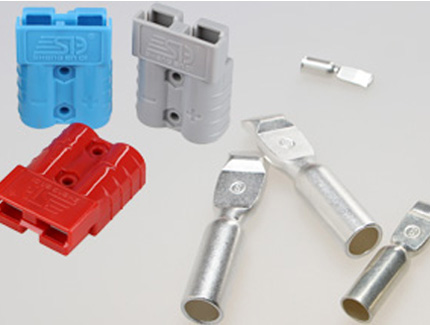With technological advancements driving the continuous evolution of industrial automation, the role of connectors and terminals has expanded far beyond merely ensuring the proper functioning of machinery. Nowadays, these connectors are integral not only for current transmission but also for signal transmission and security. Consequently, procurement specialists must consider a growing list of factors when choosing connectors and terminals. But what are the fundamental principles to consider when selecting industrial connectors?

Specification Selection
Industrial terminal and connector manufacturers rely on approximately 25 testing organizations to define their complete or partial testing specifications. It is crucial to apply the appropriate testing standards specific to the application context, including internationally accepted standards. This ensures that the connectors meet the rigorous demands of their intended use.
Electrical Requirements
When choosing an electrical connector, it's essential to consider the product's electrical specifications. Key questions include: What are the voltage and current requirements? Can the connector reliably function under these electrical conditions? Additionally, other electrical parameters must be considered, such as resistance, allowable resistance variation, millivolt drop, maximum current capacity, maximum voltage capacity, inrush current, characteristic impedance, voltage standing wave ratio (VSWR), insertion loss, and shielding effectiveness.
Environmental Requirements
The environmental conditions—temperature, humidity, and other factors—where the connector will be used are critical considerations. This includes not only the operational environment but also storage conditions and their suitability. Environmental specifications should also address shock and vibration requirements, including those related to maritime transport, as well as manufacturing conditions such as soldering temperatures and durations. According to connector manufacturers, the highest temperatures are generated in the area around the continuous current path of the connector.
Mechanical Performance Requirements
Several mechanical factors must be assessed when selecting a connector: What is the effective size and footprint? What are the allowable dimensional tolerances? What is the insertion and withdrawal force for the terminals? How durable is the connector (i.e., how many mating cycles can it endure)? For instance, in the context of printed circuit boards, determining the board’s tolerance is crucial, as it represents the critical threshold for edge connectors and the feasibility of reaching that threshold. For low-power circuits, the plating and substrate materials must align with signal standards and environmental ratings.
Summary
Industrial terminals, including modern industrial connectors, are engineered to operate effectively in harsh environments, ensuring the smooth operation of machinery. As such, the performance standards for industrial connectors and terminals are significantly higher and more stringent compared to standard connectors. Therefore, when selecting industrial terminals/connectors, it's essential to adhere to these four critical performance criteria, ensuring that the connectors meet the rigorous demands of industrial applications.
 Guangdong SED Co., Ltd.
Guangdong SED Co., Ltd.
 +86 13763213143
+86 13763213143
 info@dmictech.com
info@dmictech.com


